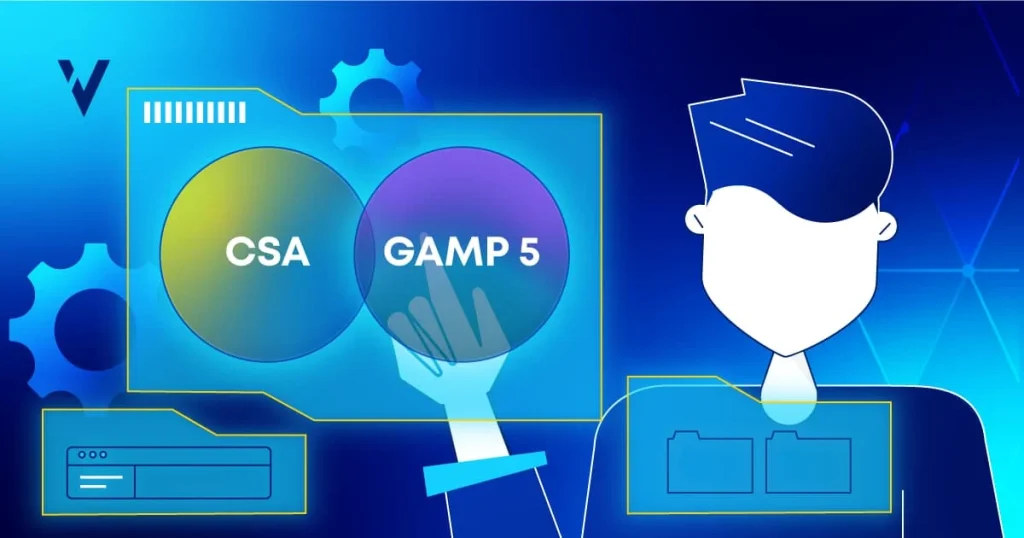
If you’ve been paying attention to the world around you, you’ve probably noticed a trend: everything’s going digital. From the way we shop to how we connect with others, digital technology is transforming just about every aspect of our daily lives. But what about life sciences? The pharmaceutical, biotech, and healthcare sectors are not exactly known for being early adopters of the latest tech trends, right?
Well, that’s starting to change. The digital shift is happening in life sciences too, and it’s changing the game in ways that are both exciting and transformative. But how exactly is technology reshaping these industries, and what does that mean for companies working in regulated fields like pharmaceuticals and biotech? Let’s dive in and explore how digital tools are reshaping the landscape and what that means for the future of life sciences.
Why Digital Transformation is a Big Deal in Life Sciences
We’ve all heard the term “digital transformation” thrown around, but what does it really mean in the context of life sciences? It’s about leveraging technology to rethink and improve almost every part of the process. From drug discovery and development to manufacturing and compliance, digital solutions are making everything faster, more efficient, and more connected.
The reason this digital shift is so important in life sciences is simple: the stakes are high. From saving lives to developing life-saving medications, companies in this space can’t afford to make mistakes. At the same time, the industry has historically been slow to adopt new technologies—often due to the complexity of the work and the heavy regulatory requirements that come with it.
However, new technologies are helping life sciences companies tackle these challenges head-on. And with digital tools, organizations can meet the rising demands of innovation, regulatory pressure, and ever-changing global health needs more effectively than ever before.
What’s Driving the Digital Shift in Life Sciences?
There are several key factors pushing life sciences toward digital transformation. Let’s take a look at the top drivers.
Technological Advancements
Technology is evolving at a mind-blowing pace. We’re talking about tools like artificial intelligence (AI), machine learning, big data, and the Internet of Things (IoT) that are becoming integral to life sciences. For example, AI can analyze huge amounts of data much faster than a human ever could, allowing researchers to find patterns and make predictions with impressive speed and accuracy.
Machine learning algorithms are already being used to speed up drug discovery, while big data helps optimize clinical trials by identifying the best candidates and predicting outcomes more effectively.
Regulatory Pressure
You might think regulations would slow down innovation, but in life sciences, they’re actually pushing companies to modernize. As regulatory agencies like the FDA continue to implement stricter guidelines and increase scrutiny, organizations need digital tools to help them stay compliant while working faster and more efficiently.
Take documentation, for instance. In the past, keeping track of everything meant endless piles of paper and mountains of forms. Now, digital documentation systems streamline the process, making it easier to ensure compliance and keep things organized. No more scrambling to find that one important form buried under stacks of paper—everything is right there at your fingertips.
Global Health Challenges
Let’s not forget that life sciences companies are often at the forefront of dealing with global health crises. From pandemics to emerging diseases, digital technologies have enabled faster response times and more efficient development of vaccines and treatments. In the past, these processes took years; today, technology is shortening timelines and enabling better collaboration between scientists, researchers, and health organizations worldwide.
Innovation and Collaboration
Another major factor in this shift is the need for better collaboration and innovation. With digital tools, it’s easier than ever to work together, whether that’s between teams within a company or across multiple organizations and research institutions. Data sharing, cloud-based platforms, and real-time communication tools have made it easier for stakeholders to stay connected, work on joint projects, and share findings instantly.
Where is Digital Transformation Making an Impact?
Okay, so we know that digital transformation is happening, but where exactly is it making a difference in life sciences? Let’s take a closer look at some key areas.
Drug Discovery and Development
Traditionally, developing a new drug has been a long and costly process, taking years to get from concept to market. But digital tools are helping companies speed up this process.
Artificial intelligence is a game-changer here. By analyzing massive datasets of biological information, AI can identify promising compounds, predict their effectiveness, and even suggest new drug candidates. This means researchers can discover new treatments more quickly and reduce the amount of time spent on trial and error.
Manufacturing and Quality Control
Once a drug is developed, it needs to be manufactured. In the past, this involved a lot of manual oversight, but now, digital systems are automating many parts of the process.
Advanced sensors, robotics, and predictive analytics are transforming how drugs are produced, tested, and packaged. Automated systems can monitor production quality in real-time, identify any potential issues before they become major problems, and adjust processes to maintain high standards. This leads to greater efficiency, reduced waste, and better quality products.
Regulatory Compliance and Documentation
As mentioned earlier, life sciences companies are held to strict regulatory standards. Adopting digital solutions helps ensure that all processes are properly documented and compliant with regulations. For example, electronic signatures and digital records streamline the approval process, making it easier to submit to regulatory bodies and keeping everything organized in one place.
What is GAMP 5 and How Does It Fit Into the Digital Shift?
You might be wondering: How do companies ensure that their digital systems comply with all these regulations? That’s where GAMP 5 comes in.
So, what is GAMP 5? GAMP 5, or Good Automated Manufacturing Practice, is a set of guidelines designed to help companies in regulated industries—like life sciences—ensure that their automated systems are reliable, compliant, and validated. It provides a framework to ensure that the digital tools being used in manufacturing, quality control, and other key areas meet the necessary standards.
In simpler terms, GAMP 5 helps ensure that automated systems are functioning properly and producing valid, compliant data. This is especially crucial in highly regulated industries, where the risk of errors can have serious consequences.
So why does GAMP 5 matter for life sciences companies? As they adopt more advanced digital tools and automated systems, they need a way to make sure these systems are working as they should. GAMP 5 outlines the steps needed to validate these systems, from planning to implementation, ensuring that everything meets regulatory standards. This is particularly important for ensuring that digital processes, like automated production lines or electronic documentation systems, are both effective and compliant.
What Are the Benefits of Going Digital in Life Sciences?
By now, it’s pretty clear that digital transformation is a big deal. But what does it actually mean for life sciences companies on the ground?
Increased Efficiency
Digital tools automate a lot of manual processes, saving time and reducing human error. This means less time spent on paperwork and more time spent on innovation. Plus, automation helps to streamline production processes, ensuring drugs get to market faster.
Cost Savings
While adopting new technology requires an upfront investment, the long-term savings are significant. From reducing labor costs to minimizing errors and recalls, digital solutions can help life sciences companies save money in the long run.
Faster Time-to-Market
With digital tools, companies can accelerate their research and development processes, speeding up everything from drug discovery to clinical trials and regulatory approval. This means patients get access to new treatments more quickly, which is a huge win for everyone involved.
Improved Collaboration
Finally, digital systems make it easier for teams to collaborate across functions, locations, and even companies. Whether it’s real-time communication or shared data platforms, the digital shift enables faster, more efficient collaboration.
The Road Ahead: What’s Next for Life Sciences?
As technology continues to evolve, so too will the ways in which life sciences companies operate. We’re already seeing new innovations like blockchain for data integrity, AI-driven analytics, and personalized medicine that’s tailored to individual patients based on their genetic makeup. The possibilities are endless.
One thing is certain: the digital shift in life sciences is just beginning, and it’s going to keep evolving. Companies that embrace this change will be better positioned to stay ahead of the curve, innovate faster, and, most importantly, make a bigger impact on the world.
In a world where technology is driving change faster than ever before, life sciences is catching up—and it’s exciting to watch. From drug development to compliance, digital tools are enabling companies to work smarter, faster, and more collaboratively. And as technologies like AI, IoT, and machine learning continue to evolve, the future of life sciences will be more dynamic, more efficient, and, ultimately, more beneficial for patients everywhere.
So, if you’re in the life sciences industry, the time to embrace the digital shift is now. The tools are available, the benefits are clear, and the future is waiting.






